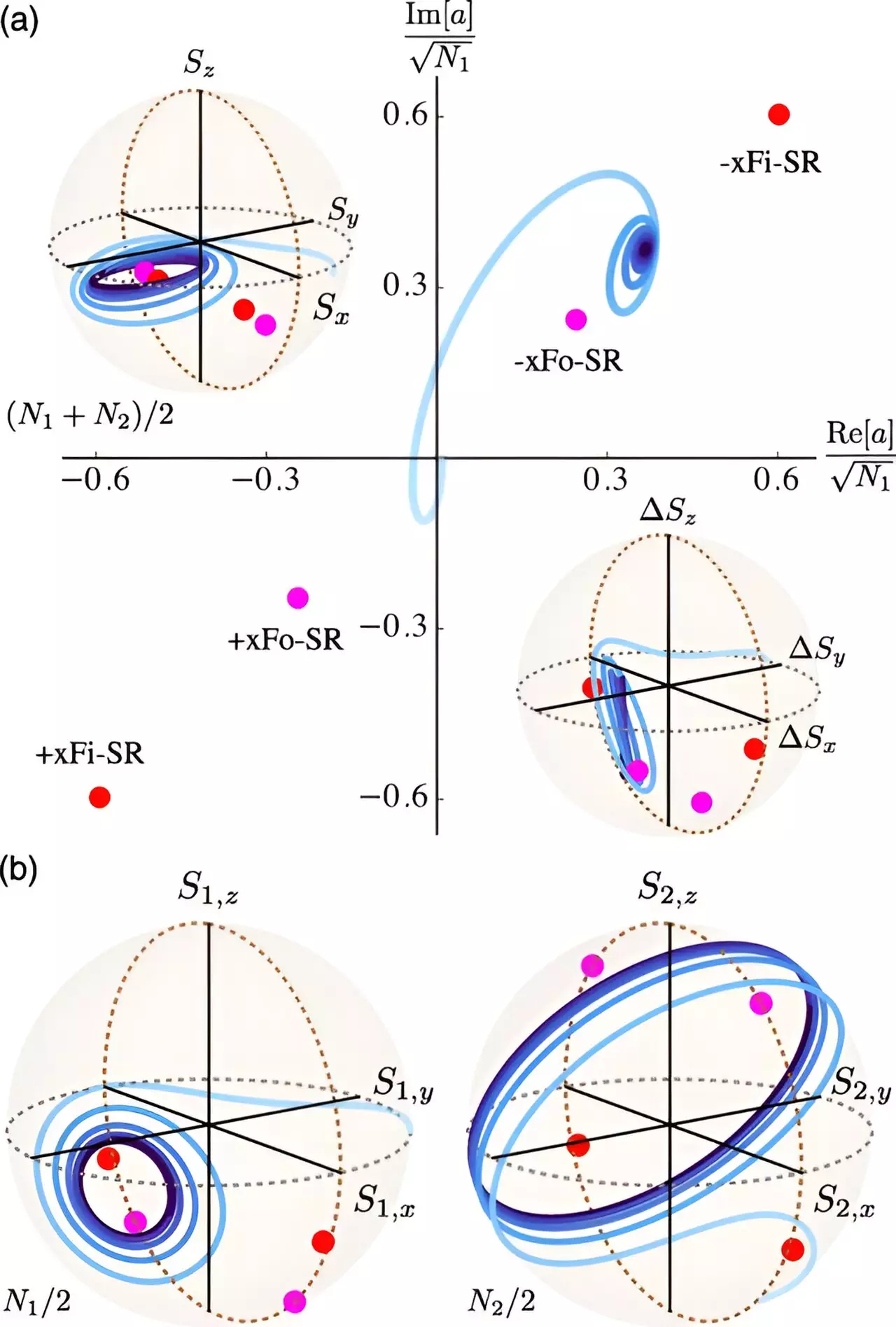Theoretical physicist Farokh Mivehvar delves deep into the realm of quantum physics, specifically focusing on the interaction of two sets of atoms emitting light within a quantum cavity. This unique optical device comprises of high-quality mirrors facing each other, creating a confined space where light can linger for extended periods. The implications of Mivehvar’s work are not only theoretical but also practical, as they can be validated in cutting-edge cavity/waveguide-quantum-electrodynamics experiments. Moreover, the findings could potentially pave the way for advancements in superradiant lasers, a groundbreaking technology in the field of quantum optics.
Superradiance is a phenomenon that continues to captivate scientists in the realm of quantum physics. By envisioning atoms as miniature antennas capable of emitting light under specific circumstances, we can understand how this effect manifests itself. When atoms are isolated and thermally excited, they emit light independently, with the intensity correlating to the number of atoms present. However, when these atoms are in close proximity, a fascinating synchronization occurs, resulting in a combined emission of light that is proportional to the square of the atom count. This synchronization can be likened to the formation of a colossal antenna, leading to a significantly more efficient emission of energy.
In his recent study published in Physical Review Letters, Farokh Mivehvar delves into the complexities of two sets of atoms within a quantum cavity, each exhibiting superradiant behavior. One might assume that the simultaneous emission of light from these two sets of atoms would be straightforward, but Mivehvar’s findings suggest otherwise. Through his research, Mivehvar uncovers two distinct mechanisms through which these giant atomic antennas interact.
In one scenario, the two sets collaborate to create a single, super-giant antenna, resulting in an even more pronounced superradiant emission. Conversely, the second scenario sees the giant antennas engaging in competition, leading to the suppression of light emission. It is particularly intriguing to note that when the two sets of atoms contain an equal number of atoms, the superradiant light emission is entirely stifled. Furthermore, Mivehvar highlights instances where the emission of light is a complex superposition of the cooperative and competitive mechanisms, displaying an oscillatory pattern.
Implications and Applications
The model and predictions put forth by Farokh Mivehvar have significant implications for the field of quantum optics. These theoretical insights can be actualized and observed in modern cavity/waveguide-quantum-electrodynamics experiments, shedding light on the intricate dynamics of superradiance. Moreover, the findings could potentially revolutionize the development of superradiant lasers, paving the way for a new era of laser technology with unprecedented efficiency and functionality. The exploration of quantum superradiance continues to unravel a myriad of possibilities, offering a glimpse into the fascinating interplay between atoms within a quantum cavity.



Leave a Reply